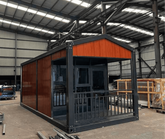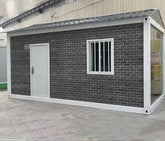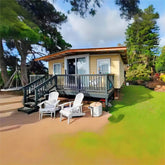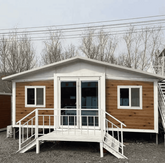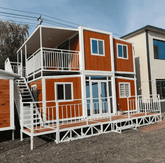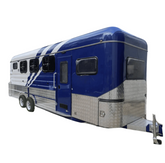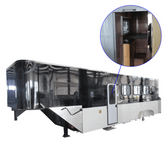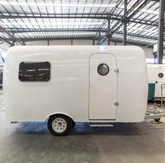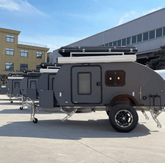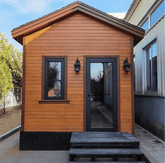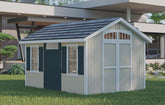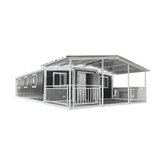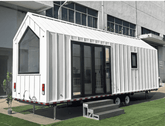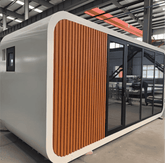Why More People Are Choosing Tiny Homes Over Traditional Houses?
In recent years, many Americans have started looking at homes in a very different way. For decades, the dream was to own a big house with plenty of rooms, a large yard, and lots of storage. But times are changing. More people are now choosing tiny homes over traditional houses. These homes are small but smartly designed spaces are gaining attention all across the country.
This shift is not just about saving money. It’s about freedom, flexibility, and a lifestyle that fits modern needs. In this article, we’ll explore the reasons why tiny homes are becoming a serious option for many families, young couples, retirees, and even single professionals.
1. Affordable Housing in an Expensive Market
The cost of traditional housing in the U.S. has risen sharply in the past decade. In many cities, the price of an average home is out of reach for middle class families. Renting is not much better, with high monthly costs that make it difficult to save for the future. That’s the one of the important reasons for shifting from traditional house to tiny houses.
Tiny homes offer a way out of this cycle. A well-built tiny home can cost a fraction of what a traditional house does. Even with land costs included, the total price is still much lower. For many people, this makes homeownership possible for the first time. Instead of spending 30 years paying off a mortgage, they can own their home outright in a much shorter time.
2. Lower Monthly Expenses
Owning a house is more than just paying the mortgage. Utility bills, property taxes, and maintenance all add up. Traditional homes require heating, cooling, and powering large spaces. That means higher electricity and gas bills.
With a tiny home, those costs shrink. A smaller space needs less energy. Many tiny homes are designed with energy efficiency in mind, using modern insulation, solar panels, and efficient appliances. Property taxes are also lower since the value of the home is smaller. Overall, monthly expenses drop, leaving owners with more money to spend on travel, hobbies, or savings.
3. Less Debt, More Freedom
Debt is a heavy burden for many Americans. A traditional home often comes with decades of mortgage payments. That financial pressure can limit career choices, lifestyle decisions, and even retirement plans.
Tiny homes allow people to live with little or no debt. Without a massive mortgage, owners are free to make different life choices. Some choose to work less, travel more, or start small businesses. Others invest in experiences instead of material possessions. Financial freedom brings peace of mind and more control over life.
4. A Simpler Lifestyle
Large homes often lead to clutter. With more rooms and storage, people tend to buy more than they need. This can create stress and a feeling of being tied down by “stuff.”
Tiny homes encourage a simpler way of living. With limited space, every item must have a purpose. People learn to live with less, and many find it refreshing. Minimalism reduces stress, saves money, and makes daily life easier. Instead of cleaning and organizing endless rooms, owners can spend their time on things that matter.
5. Mobility and Flexibility
Not all tiny homes are fixed in one place. Many are built on trailers, allowing owners to move them wherever they like. For people who love to travel or explore new areas, this is a perfect option.
Imagine being able to live in the mountains one season, near the beach the next, and close to family the following year. This kind of mobility is not possible with a traditional house. Tiny homes give people the flexibility to follow jobs, adventures, or personal dreams without leaving their home behind.
6. Eco-Friendly Living
Climate change and environmental issues are major concerns for today’s generation. Traditional houses often use large amounts of resources to build and maintain. They also require high levels of energy for heating, cooling, and lighting.
Tiny homes are naturally more eco-friendly. They use fewer materials to build and less energy to run. Many owners also choose renewable energy sources, composting toilets, and rainwater collection systems. This smaller footprint helps reduce impact on the environment. For eco-conscious people, tiny homes are a step toward sustainable living.
7. Freedom From Location Ties
Traditional homeownership often ties people to one city or one neighborhood for many years. Selling a house is a long process, and moving is expensive.
Tiny homes break that pattern. With a movable tiny home, people can relocate more easily. Even with a fixed tiny home, the investment is smaller, making it less stressful to sell and move. For younger professionals who change jobs often or retirees who want to explore, this flexibility is a big advantage.
8. Rising Interest in Minimalism and Experiences
The younger generation, especially millennials and Gen Z, are showing less interest in owning large homes filled with items. Instead, they value experiences like travel, hobbies, and personal growth.
Tiny homes match this lifestyle. With lower costs and smaller living spaces, people have more freedom to spend their time and money on experiences. Living in a tiny home is not about what you own, it’s about how you live. This shift in values is one of the key reasons why tiny homes are on the rise.
9. A Solution for Retirees
Retirement can bring financial challenges. Many seniors live on fixed incomes, and maintaining a large home becomes difficult. Downsizing to a tiny home can make life easier and more affordable.
A tiny home requires less cleaning, fewer repairs, and lower monthly bills. It also gives retirees the chance to live closer to family, enjoy travel, or join tiny home communities designed for older adults. Instead of feeling burdened by a large property, they can enjoy a simpler and more comfortable retirement.
10. Growing Tiny Home Communities
Tiny homes are no longer just a trend for individuals. Across the U.S., communities of tiny homes are being developed. These communities provide shared spaces, social connections, and affordable living options.
Living in such a community offers the best of both worlds: privacy in your own small home and the support of neighbors with similar values. This is especially appealing to people who want to escape the isolation of suburban life but still enjoy a sense of belonging.
11. Customization and Personal Design
Traditional houses often follow standard designs. Changing them can be expensive and time-consuming. Tiny homes, however, offer a unique opportunity for customization.
Owners can design their tiny homes to fit their personal needs. From built-in storage to multipurpose furniture, every detail can be planned. This makes the home not only efficient but also deeply personal. The sense of pride and connection that comes from designing a space just for yourself is something many traditional houses cannot offer.
12. Faster Building and Ownership
Building a traditional home can take months or even years. The process includes long waits, high costs, and complicated permits.
Tiny homes, on the other hand, are much quicker to build. Some can be completed in just a few weeks. Many companies now offer pre-built tiny homes that can be delivered and set up in a short time. For people eager to own a home without waiting years, this speed is a major benefit.
13. Safety and Security
At first, some people worry that tiny homes might feel less secure. But in reality, many are built with the same strong materials as traditional houses. Mobile tiny homes are often designed to withstand travel conditions, making them very durable.
Also, with lower costs, owners can spend more on safety features like quality locks, alarms, and modern materials. Many tiny home owners feel safer because they can park or place their homes in secure areas, often closer to friends or family.
14. Rising Cultural Acceptance
A decade ago, tiny homes were seen as unusual or experimental. Today, they are becoming mainstream. Popular TV shows, social media, and news stories have spread awareness. Many Americans are now more open to the idea of small-scale living.
This cultural shift makes it easier for people to choose tiny homes without feeling judged. Zoning laws and regulations are also slowly adapting to meet this growing demand. As acceptance grows, tiny homes will continue to spread across the country.
15. The Future of Housing
Housing challenges in the U.S. are unlikely to disappear soon. Prices remain high, and land is limited in many areas. Younger generations may not want or be able to invest in large traditional homes.
Tiny homes offer a realistic solution. They are affordable, flexible, eco-friendly, and aligned with modern values. As more people embrace this way of living, tiny homes could become a standard part of the housing market.
Conclusion
The movement toward tiny homes is about more than small spaces. It’s about big changes in lifestyle, priorities, and values. People are choosing freedom over debt, simplicity over clutter, and experiences over possessions.
Tiny homes are not for everyone, but for many Americans, they provide an answer to the housing crisis and a chance to live life on their own terms. Whether for financial reasons, environmental concerns, or personal choice, tiny homes represent a powerful shift in the way we think about living.
As the trend grows, it’s clear that tiny homes are more than a passing fad. They are shaping the future of housing in the U.S.—one small, smart, and affordable space at a time.



